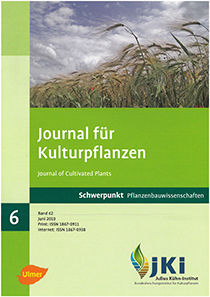Effect of energy forestry on physical, chemical and biological soil properties on a Chernozem in continental dry climate conditions in central Germany
DOI:
https://doi.org/10.5073/JfK.2010.06.01Keywords:
Willow, poplar, dry bulk density, organic carbon, microbial biomass, earthwormsAbstract
The last years have seen a growing interest in renewable resources for energy production. Especially the use of wood has increased considerably. Most studies, however, have only looked into agricultural or production aspects, thus we focus on ecologically relevant soil properties of poplar (Populus nigra ssp.) or willow (Salix viminalis ssp.) in short rotation forestry on a Chernozem located in the continental dry climate of central Germany. The results are based upon measurements in a long-term field experiment, which commenced in 2000 at Bad Lauchstädt experimental station near Halle, comparing various energy crops. Reference for all measurements is always an adjacent arable crop rotation.
Even only after four years of short rotation forestry some soil physical parameters were affected. Without any tillage in the energy forestry the bulk density increased and the saturated hydraulic conductivity decreased. Those differences were limited to the uppermost layer of the topsoil. In deeper soil layers no differences were observed. Under willows the uppermost soil layers showed a significant increase in soil organic carbon and hot water carbon. In contrast, no differences in soil organic carbon were measured under poplar. Microbial biomass and various enzyme activities like ß-Glucosidase, Arginin-Ammonification were significantly higher in the topsoil under energy forestry and also showed a steep gradient. Additionally the lumbricides did respond substantially to the different cropping systems. Under poplar and willow parameters like abundance, biomass and species diversity of lumbricides increased significantly.
In conclusions, our results demonstrate a positive effect of the fast growing tree species poplar and willow on a number of important soil quality parameters at the experimental site on a Chernozem in central Germany.
Downloads
Published
Issue
Section
License
The content of the journal is licensed under the Creative Commons Attribution 4.0 License. Any user is free to share and adapt (remix, transform, build upon) the content as long as the original publication is attributed (authors, title, year, journal, issue, pages).
The copyright of the published work remains with the authors. The authors grant the Journal of Cultivated Plants, the Julius Kühn-Institut and the OpenAgrar repository the non-exclusive right to distribute and exploit the work.







